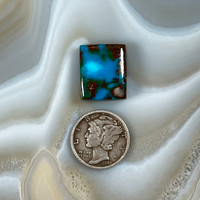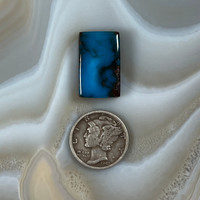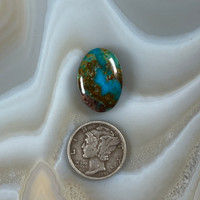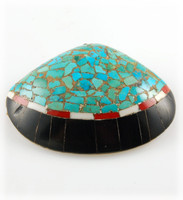 Loading... Please wait...
Loading... Please wait...- 970-375-2401
- Gift Certificates
- My Account
Currency Displayed in
- Home
- Learning Center
- Native American Facts and Native American Jewelry Information
- Santo Domingo History
Categories
Santo Domingo History
Santo Domingo History
A Brief History of the Santo Domingo Pueblo
Santo Domingo Pueblo or Khe-wa as it is known to its residents, lies between Albuquerque and Santa Fe along the Rio Grande. Santo Domingo is recognized in Pueblo country as perhaps the most conservative of the Pueblos, with some of the richest traditions.
At the time of Oñate’s entry into New Mexico in 1598, several Pueblo communities rested near or directly on the route that would become the Camino Real. Oñate’s journal recounts the expedition’s visits to several Native communities, including the village of Santo Domingo. This pueblo would become one of several headquarters of the Spanish colonial mission system in the newly established province of New Mexico and a significant location of Pueblo resistance against Spanish hegemony during the Pueblo Revolt and during the Re-conquest.
After the Spanish established San Gabriel they designated Santo Domingo as the headquarters of the province of the Queres [Keres] which included the neighboring pueblos of San Felipe and Cochiti, and eventually became the primary headquarters for the Franciscan supervisor in 1610 when the Spanish capital was moved from San Gabriel to Santa Fe.
The Franciscans attempted to convert Native peoples to Catholicism and proceeded to direct the construction of missions at a number of villages. In 1607 under Franciscan head Friar Juan de Escalona, the Franciscans and Indian laborers built a mission at Santo Domingo. The original mission was one of the largest in New Mexico, but was destroyed by a devastating flood which swept through the village in the late 1800s. Residents attempted to save the mission, but each year the river continued to encroach on the heavily damaged adobe building until the foundation finally crumbled in 1886.
Upon arriving in Santo Domingo in the late 1500s the Spanish had promised Pueblo communities assistance against raiding from nomadic tribes. Numerous Indian leaders from the surrounding pueblos gathered at Santo Domingo, pledging allegiance to the Spanish King. Oñate communicated with Indians through two Mexican Indians who had been left at Santo Domingo during the 1590 Castaño de Sosa expedition. The Spaniards used these communications to keep an establishment at Santa Domingo and Fight of Raids of other Native American Indian Tribes.
As these raids continued to take a harsh toll on the agricultural villages of the Pueblos, resentment among the Pueblos continued to grow. The oppressive policy of the Spanish including demands made on Pueblo labor, continued Spanish condemnation of Native beliefs and practices, the desecration of Pueblo religious objects, and the physical punishment of numerous religious leaders, fueled further discontent. The Pueblos finally rose in rebellion on 10 August 1680, under the leadership of men like Popé from San Juan Pueblo and Alonso Catiti of Santo Domingo.
Santo Domingo, like San Juan had become a key location for resistance during the revolt. The Pueblo successfully expelled the Spanish from New Mexico for over ten years.
In 1692 the Spanish government, led by Diego de Vargas reasserted its authority over Native peoples in New Mexico. Santo Domingo and other Pueblos refused to acquiesce. A number of rebellions broke out. The Pueblo of Santo Domingo remained and in 1700 was once again established as a head for the administration of Spanish missions.
Thereafter, relations between the Spanish and Pueblos remained relatively quiet, however population levels continued to fluctuate throughout the eighteenth century.
With American settlement the village of Santo Domingo was again touched by the expanding reach of another foreign nation. The Atchison, Topeka and Santa Fe Railroad reached New Mexico in the 1880s and together with other entrepreneurs promoted Pueblo peoples in its advertising, bringing attention to the arts and crafts, and the culture of villages like Santo Domingo. Soon trains let off passengers near Santo Domingo. By the 1920s Santo Domingo had become a major tourist destination and was as close to Indian country as many tourists could get. Organizers of one of the foremost tourist draws during that era, the Santa Fe Fiesta, encouraged tourists to partake in Santo Domingo’s traditional corn dance during the village’s annual August 4th feast day. Throngs of tourists traveled to the village by automobile and by train on “Limited Pullman specials,” which dropped visitors off near the pueblo for an hour.
The people of the community reacted likewise by producing pottery and jewelry specifically for the tourist market. The Santo Domingo Pueblo is perhaps producing more of this curio pottery than all of the other Pueblos together, and this is mainly due to the size of the population and the fact that the pueblo is located near the transcontinental highway between Albuquerque and Santa Fe. For over fifty miles one can find Santo Domingo Indians scattered along this road at short intervals, holding up every traveler with a plea to buy ware.
Today many artisans at Santo Domingo are renowned for their heishi, turquoise jewelry, and pottery; and they continue to sell these wares at tourist centers like the Santa Fe Plaza and near roadside stops like the one located at the pueblo-owned gas station located off of the interstate highway between Santa Fe and Albuquerque.
In the past the people of Santo Domingo have adapted to the Spanish civil form of government as one of the parajes or stops along the Camino Real, and later have dealt with the influx of Americans when their village became a major tourist destination, but they remain resilient and have not forgotten where they come from. Perhaps it is because of this ongoing contact with outsiders, like the Spanish and Americans, that the people of Santo Domingo have been extra protective of their Native way of life. They continue to preserve their traditions more than others and have not taken their Native ways and language for granted.
Click Here For More on Santo Domingo Jewelry
Sources Used:
Dozier, Edward P. The Pueblo Indians of North America. New York: Holt, Rinehart, and Winston, Inc., 1970.
Halseth, Odd S. “The Revival of Pueblo Pottery Making,” El Palacio 21, no. 6 (September 15, 1926): 150-51.
Moorhead, Max L. New Mexico’s Royal Road: Trade and Travel on the Chihuahua Trail. 1958; reprint, Norman: University of Oklahoma Press, 1995.
Prince, L. Bradford. Spanish Mission Churches of New Mexico. Cedar Rapids, Iowa: Torch Publishers, 1915.
Roberts, Susan A. and Calvin A Roberts. New Mexico. 1988; reprint, Albuquerque: University of New Mexico Press, 2001.
Sando, Joe S. Pueblo Nations: Eight Centuries of Pueblo Indian History. 1992; reprint, Santa Fe: Clear Light Publishers, 1998.
Spicer, Edward. Cycles of Conquest: The Impact of Spain, Mexico, and the United States on the Indians of the Southwest, 1533–1960. 1962; reprint, Tucson: University of Arizona Press, 1997.
“Corn Dance Dramatic Indian Ceremonial, Santo Domingo,” Santa Fe New Mexican, 4 August1925, p. 1.












